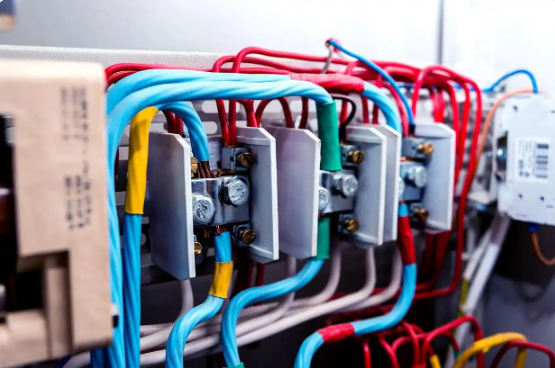- Home
- Products
- Certificates
- Cooperation
- About Us
- News
- Contact
Contact
+86 188 3213 4509
Contact
+86 188 3213 4509
Sep. 26, 2025
Wiring is a fundamental component of power system, and the choice between copper core and aluminum core cables is of great significance in both residential and industrial applications. Both of these metals are important raw materials in the manufacturing of wires and cables. Each material has unique properties that affect cost, performance, safety and service life.

This article explores the differences betwen copper core cables and aluminum wires, comparing their advantages, disadvantages, and common applications to help you make the right choice.
Resistivity and current-carrying capacity
Copper is an excellent conductor of electricity, with higher electrical conductivity than aluminium. It has a conductivity of 100%,IACS (International Annealed Copper Standard), meaning it allows current to flow with minimal resistance: Aluminum's conductivity is about 61% of copper's IACS, meaning thicker wires would be needed to carry the same amount of current as copper. In addition, due to its low resistivity, coper core cables of the same cross-section carry about 30% more current than aluminum core cables. This not only means less voltage loss during transmission, but also ensures longer power supply distances and greater power supply coverage.
Ductility and strength comparison
Copper wire has excellent ductility, reaching 20 to 40 percent, far surpassing aluminium wire's 18 percent. Copper wire is also much stronger than aluminium wire, and copper core cables are more resistant to high
temperatures and electrical load fluctuations:
Stability and corrosion resistance
Copper core cables also have excellent stability. They are resistant to oxidation and corrosion. Aluminum core cables are more prone to oxidation. If not maintained, oxidation can lead to increased resistance and overheating.
Energy Consumption and Safety Performance
Copper core cables also do great when it comes to energy consumption. Their power loss is way less than that of aluminum cables. This helps boost the power generation efficiency and is better for the environment. With the same current, copper core cables generate much less heat than aluminum core cables. So, they're much safer to operate.
Cost-Benefit Analysis
Copper wire is pricier, but it lasts longer. And the maintenance requirements are relatively low. Plus, its conductivity is better, which means lower energy loss—so in the long run, it's more efficient.
Application of copper cables and aluminum cables
Copper-Core Cable Applications:
- Residential Wiring: Due to its reliability and safety features, it is commonly used for indoor outlets, lighting fixtures, and appliances.
- High-Risk Environments: In settings such as hospitals, data centers, and critical infrastructure where performance and durability are paramount.
- Automotive and Aerospace: The high conductivity and corrosion resistance of copper make it an ideal material for vehicle wiring.
- Underground and Outdoor Installations: Copper cables exhibit greater resistance to moisture and corrosion.
Aluminum-Core Cable Applications:
- Power Transmission: Aluminum is widely utilized in high-voltage transmission lines due to its lightweight nature and cost-effectiveness.
- Renewable Energy Projects:Wind and solar power plants often use aluminum wires for cost-effective large-scale power transmission.
- Temporary Installations: Commonly found on construction sites or temporary power solutions where cost-effectiveness takes precedence over longevity.
Both types of cable materials serve distinct purposes within the industry; and the choice depends on the specific requirements of your project.